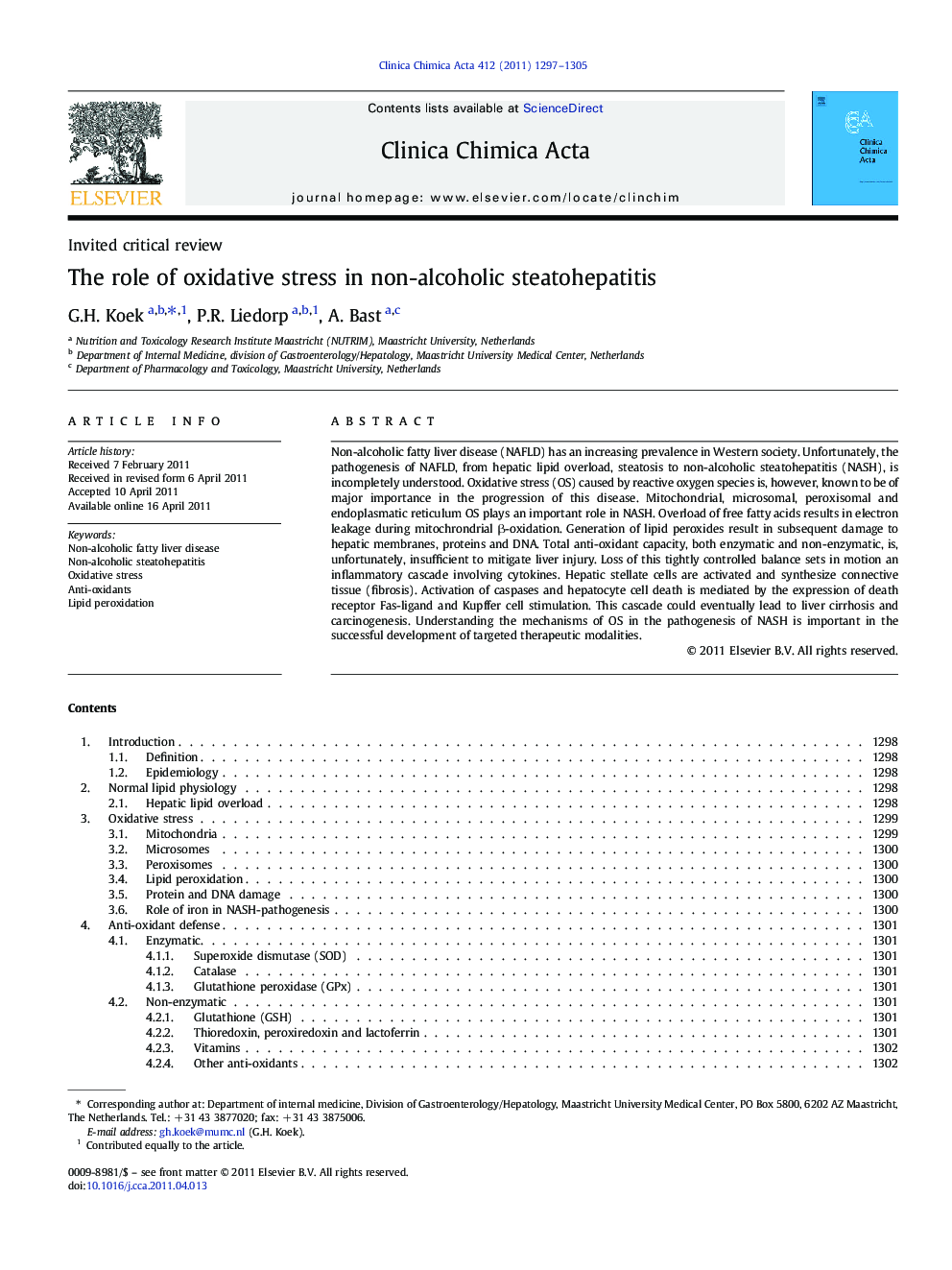| کد مقاله | کد نشریه | سال انتشار | مقاله انگلیسی | نسخه تمام متن |
|---|---|---|---|---|
| 8316250 | 1538701 | 2011 | 9 صفحه PDF | دانلود رایگان |
عنوان انگلیسی مقاله ISI
The role of oxidative stress in non-alcoholic steatohepatitis
دانلود مقاله + سفارش ترجمه
دانلود مقاله ISI انگلیسی
رایگان برای ایرانیان
کلمات کلیدی
موضوعات مرتبط
علوم زیستی و بیوفناوری
بیوشیمی، ژنتیک و زیست شناسی مولکولی
زیست شیمی
پیش نمایش صفحه اول مقاله

چکیده انگلیسی
Non-alcoholic fatty liver disease (NAFLD) has an increasing prevalence in Western society. Unfortunately, the pathogenesis of NAFLD, from hepatic lipid overload, steatosis to non-alcoholic steatohepatitis (NASH), is incompletely understood. Oxidative stress (OS) caused by reactive oxygen species is, however, known to be of major importance in the progression of this disease. Mitochondrial, microsomal, peroxisomal and endoplasmatic reticulum OS plays an important role in NASH. Overload of free fatty acids results in electron leakage during mitochrondrial β-oxidation. Generation of lipid peroxides result in subsequent damage to hepatic membranes, proteins and DNA. Total anti-oxidant capacity, both enzymatic and non-enzymatic, is, unfortunately, insufficient to mitigate liver injury. Loss of this tightly controlled balance sets in motion an inflammatory cascade involving cytokines. Hepatic stellate cells are activated and synthesize connective tissue (fibrosis). Activation of caspases and hepatocyte cell death is mediated by the expression of death receptor Fas-ligand and Kupffer cell stimulation. This cascade could eventually lead to liver cirrhosis and carcinogenesis. Understanding the mechanisms of OS in the pathogenesis of NASH is important in the successful development of targeted therapeutic modalities.
ناشر
Database: Elsevier - ScienceDirect (ساینس دایرکت)
Journal: Clinica Chimica Acta - Volume 412, Issues 15â16, 15 July 2011, Pages 1297-1305
Journal: Clinica Chimica Acta - Volume 412, Issues 15â16, 15 July 2011, Pages 1297-1305
نویسندگان
G.H. Koek, P.R. Liedorp, A. Bast,